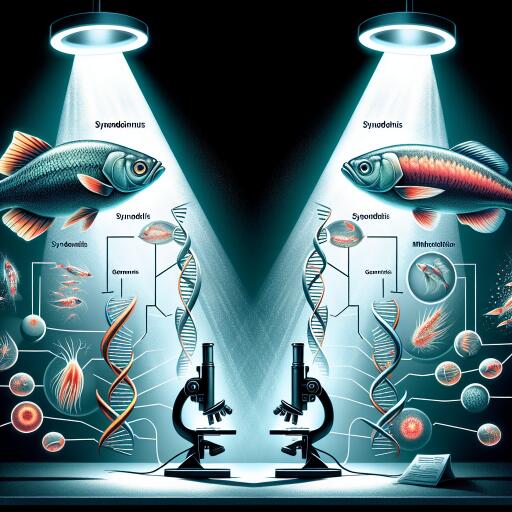Unveiling the Genetic Blueprint of Synodontis Catfish: A Leap Forward in Freshwater Biodiversity Research
In a groundbreaking study aimed at refining the taxonomic landscape of the Mochokidae family, researchers embarked on a mission to genetically dissect and compare the mitochondrial genomes of two elusive catfish species: Synodontis eupterus and Synodontis polli. Employing a combination of advanced sequencing and sophisticated bioinformatic analyses, the team not only delineated the genetic makeup of these species but also positioned them within the broader evolutionary context of their family. This exploration has paved the way for a more nuanced understanding of freshwater biodiversity, with significant implications for both aquatic ecology and conservation.
The mitochondrial genomes of S. eupterus and S. polli were meticulously sequenced, revealing lengths of 16,579 base pairs (bp) and 16,544 bp, respectively. Each genome is composed of 13 protein-coding genes (PCGs), 22 transfer RNA (tRNA) genes, two ribosomal RNA (rRNA) genes, and a control region known as the D-loop. Notably, the genomes exhibit an AT-biased nucleotide composition, a common feature that underscores the evolutionary pressures shaping these species. The AT bias accounted for 56.0% in S. eupterus and 55.0% in S. polli, hinting at a genetic blueprint geared towards energy efficiency and adaptation to their aquatic environment.
Diving deeper into the genetic architecture, the study found that all PCGs, except for the COI gene, initiate with an ATG codon. The genes predominantly terminate with TAG or TAA codons, though a minor fraction employ an incomplete codon signaling mechanism. This molecular signature is instrumental for the synthesis of proteins crucial for mitochondrial function and, by extension, for the survival and fitness of these species in their natural habitats.
From a phylogenetic standpoint, the research unfolded with the construction of a comprehensive evolutionary tree encompassing 14 Mochokidae species, including the subjects of this study. Utilizing maximum likelihood and Bayesian methods, the analysis illuminated the intricate relationships within this diverse family. Synodontis eupterus forged a close genetic linkage with Synodontis clarias, while S. polli aligned with Synodontis petricola. The overarching phylogeny underscored a remarkable convergence among various genera within the Mochokidae, offering a fresh perspective on their evolutionary lineage and diversification.
The genus Synodontis, renowned for its popularity in aquariums and its ecological significance, presents a fascinating subject for taxonomy and genetic research. Challenges in species identification due to morphological variability have historically complicated their classification. However, this study leverages DNA barcode technology, particularly focusing on the COI gene, to cut through the ambiguity and provide a reliable method for distinguishing species. This molecular approach has broad applications across the animal and plant kingdoms, showcasing a significant leap towards automating and standardizing species identification processes.
In conclusion, the meticulous sequencing and comparative analysis of the mitochondrial genomes of Synodontis eupterus and Synodontis polli have not only clarified their genetic identity but also contributed to a deeper understanding of the Mochokidae family’s phylogenetics. This research not only exemplifies the power of modern genomics in biodiversity studies but also lays the groundwork for future conservation efforts aimed at protecting these fascinating creatures and their habitats. As the quest for understanding the complexities of life continues, studies like this remain pivotal in illuminating the path towards conserving our planet’s rich biological tapestry.










